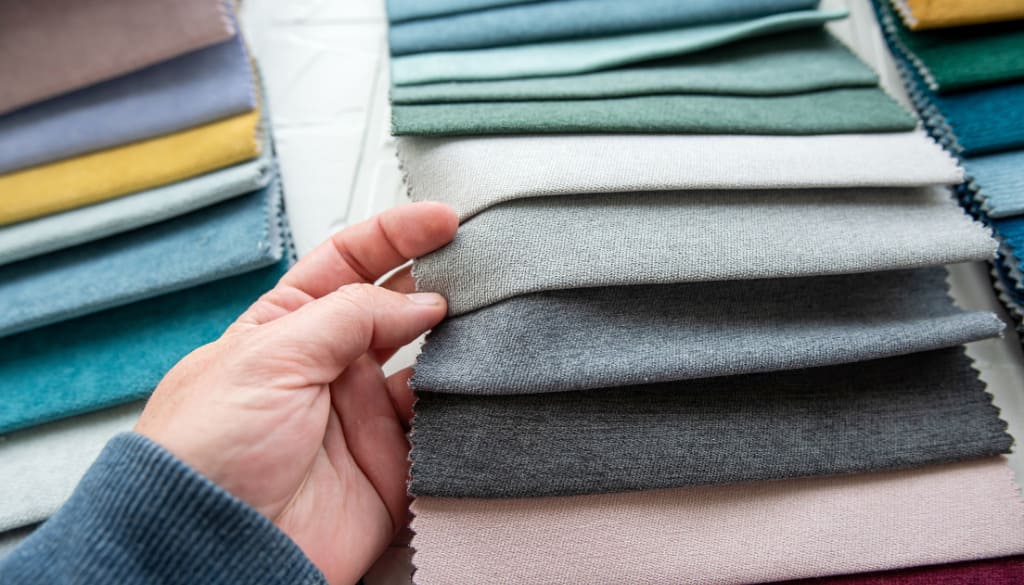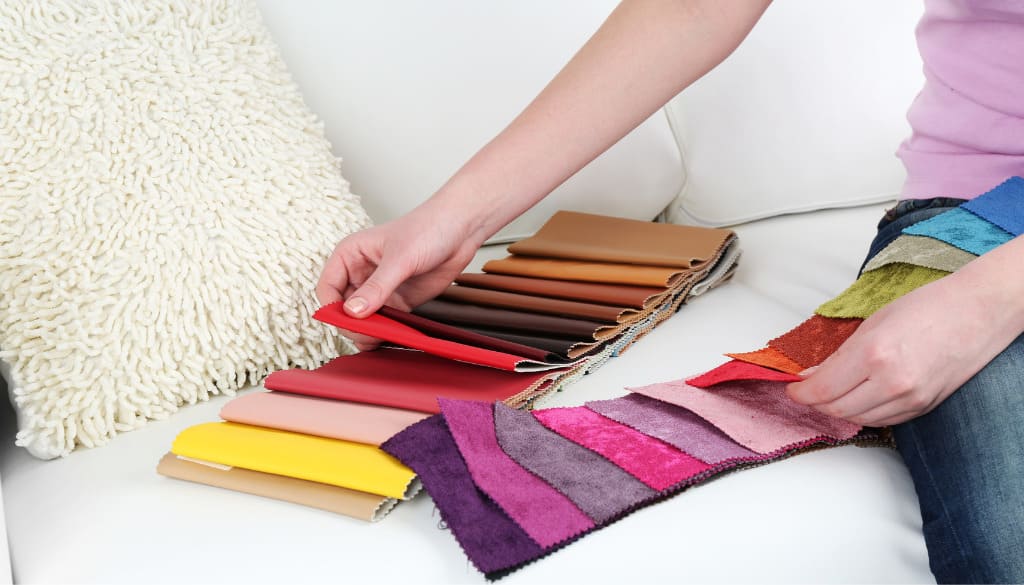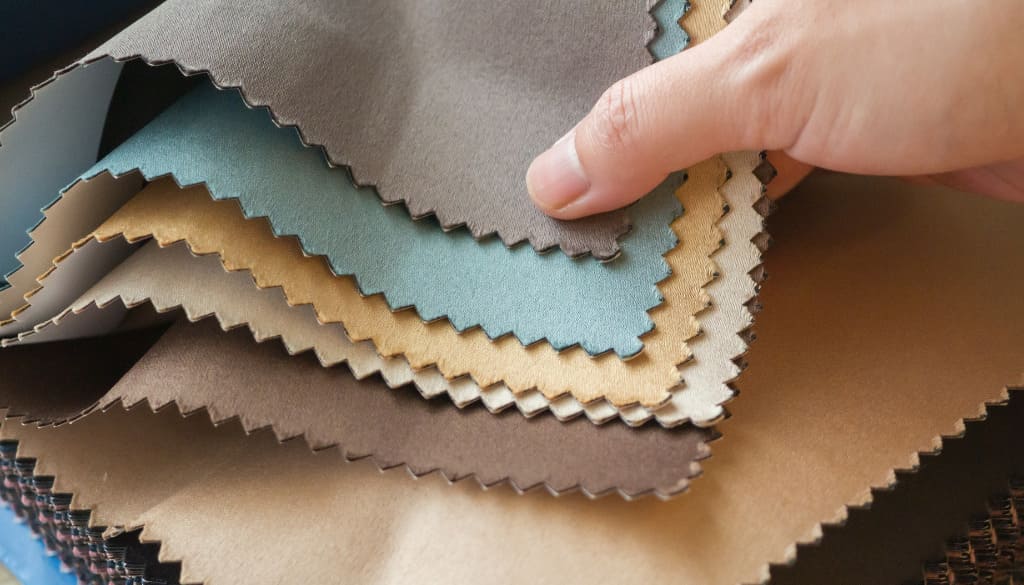In the Print on Demand (POD) industry, choosing the right fabric plays a crucial role in creating high-quality, durable products that meet customer expectations. Among the most popular materials today is polyester, widely used in producing t-shirts, jackets, tote bags, hats, and many other POD products. However, many sellers often wonder: “Does polyester fabric shrink?” Will the fabric change in size after washing or drying, and could this affect the customer experience?
In this article, FlashShip will provide a comprehensive explanation of everything you need to know about polyester shrinkage, along with practical care tips and expert recommendations to help POD sellers optimize product quality.
What is Polyester?

Polyester is not a natural fiber like cotton or wool. Instead, it is a synthetic polymer created through a chemical reaction between an acid and an alcohol. Specifically, the most commonly used type of polyester in the apparel industry is Polyethylene Terephthalate (PET), yes, it’s from the same “family” as the plastic used to make soda bottles!
Through a process called polymerization, small molecules (monomers) are bonded together to form long, stable chains (polymers). These chains are then melted, spun into fibers, and heat-set at specific temperatures and tension levels to achieve durability and shape retention.
Key Features of Polyester
It’s no coincidence that polyester and polyester-blend fabrics dominate the Print on Demand (POD) market. Its unique properties make it almost tailor-made for custom printing and apparel production:
- Exceptional Durability: Polyester fibers are incredibly strong, resistant to abrasion, wrinkles, and deformation, far outperforming cotton in shape retention. A polyester t-shirt can withstand countless washes without stretching, sagging, or losing its form. This ensures your customers receive products that look great and last longer.
- Outstanding Color Retention: Thanks to its chemical structure, polyester absorbs dye exceptionally well, resulting in vibrant, sharp, and long-lasting colors. Even after multiple washes, polyester fabrics tend to retain their original brightness better than natural fibers.
- The Perfect Canvas for Sublimation Printing: This is polyester’s biggest advantage. Sublimation printing uses high heat to transform solid ink into gas, allowing it to infuse directly into the fibers of polyester fabric. The result is a permanent, crack-free, and peel-proof print that feels soft to the touch and retains its color indefinitely. Unlike 100% cotton, polyester delivers unmatched results for sublimation designs.
- Excellent Wrinkle Resistance: For POD sellers, first impressions matter. You want products to reach your customers looking neat and professional. Polyester’s natural wrinkle resistance reduces the risk of garments becoming creased during packaging and shipping, helping you deliver products in perfect condition.
- Quick-Drying & Moisture-Resistant: Polyester is naturally hydrophobic, meaning it absorbs very little water and dries quickly. This makes it an ideal choice for activewear, sports apparel, and outdoor gear, where fast-drying performance is highly valued.
- Cost-Effective Production: Compared to premium natural fabrics, polyester generally has lower manufacturing costs, making it an affordable yet high-quality option for POD sellers looking to optimize profit margins.
By understanding these features, you’ll not only make smarter decisions when choosing polyester-based products but also market them more effectively, highlighting the exact benefits your customers will love.
Does Polyester Fabric Shrink?
This is one of the most common concerns among POD sellers, especially when selling t-shirts, hoodies, or activewear to the U.S. and European markets. The good news is that polyester rarely shrinks during washing or drying, thanks to its synthetic fiber structure and unique chemical properties.

1. Why Polyester Hardly Shrinks?
Polyester is a man-made fiber derived from petroleum and processed through advanced heat-treatment techniques. As a result, it offers several advantages over natural fibers like cotton:
- High Thermal Stability: Polyester fibers are heat-set during production, “locking” their shape from the start. This allows garments to maintain their original fit even after multiple washes.
- Low Water Absorption: Unlike cotton, polyester is hydrophobic and absorbs very little water. Its fibers don’t swell or contract during washing, which helps prevent deformation.
- Advanced Heat Processing: During manufacturing, polyester is treated at high temperatures to stabilize its structure, significantly minimizing the chances of shrinkage.
- Shrinkage Levels of Polyester
- 100% Polyester – Almost no shrinkage after washing.
- High-Temperature Drying – Polyester may shrink less than 2%, which is significantly lower than cotton, which can shrink 5% to 10%.
Thanks to these properties, polyester is a top choice for POD sellers when producing t-shirts, hoodies, sportswear, and activewear. It’s especially ideal for demanding markets like the U.S. and Europe, where customers value durability, shape retention, and premium quality.
2. Polyester vs. Cotton: Shrinkage Comparison
|
Criteria |
Polyester |
Cotton |
|
Shrinkage |
Almost no shrinkage |
Shrinks easily by 3–5% after the first wash |
|
Water Absorption |
Low |
High |
|
Shape Retention |
Excellent |
Prone to deformation when tumble-dried |
|
Color Fastness |
High |
Fades faster |
|
POD Applications |
Best for sublimation and blended printing |
Ideal for DTG and screen printing |
3. When Can Polyester Shrink? Key Scenarios POD Sellers Should Know
Although polyester is well-known for its excellent shape retention and minimal shrinkage, there are still a few exceptions where the fabric may deform. Understanding these factors helps POD sellers better manage product quality, especially when selling t-shirts, hoodies, and activewear in demanding markets like the U.S.
Scenarios That May Cause Polyester to Shrink
- Washing in Hot Water (>60°C / 140°F): Excessive heat can cause polyester fibers to expand, resulting in a loss of shape and reduced durability.
- High-Temperature Drying: While shrinkage is typically minimal, polyester can still shrink 1–2% when tumble-dried at high heat.
- Poly-Cotton Blends: The higher the cotton content, the greater the risk of shrinkage, since cotton naturally contracts when washed and dried.
Tips to Prevent Shrinkage
To maintain product quality and ensure long-lasting durability, POD sellers should:
- Recommend washing garments below 40°C (104°F)
- Advise customers to avoid high-heat drying
- Choose high-quality polyester fabrics when designing POD products
Following these practices ensures your products retain their shape, stay vibrant, and remain durable, helping you deliver a better customer experience and reduce return risks.
In addition, learn more about “do Gildan sweatshirts shrink“, the factors that affect it, and how to minimize this issue.
How to Wash and Care for Polyester to Prevent Shrinkage
To help your POD products maintain their shape, vibrant colors, and overall quality, sellers should provide customers with clear care instructions. Proper washing and drying methods not only enhance the customer experience but also reduce return rates.

1. Proper Washing Guidelines
- Water Temperature – The Key Factor: Always recommend washing in cold or warm water (up to 40°C / 104°F). Avoid hot water at all costs, as it can damage fibers and cause prints to fade. Cold water is the safest choice for both the fabric and printed designs.
- Detergent Selection: Polyester isn’t picky when it comes to detergents. Regular laundry detergents work perfectly fine. However, advise customers to avoid using harsh bleaching agents or strong chemicals, which may weaken fibers over time.
- Wash Cycle: Use the Normal or Gentle cycle for best results. Aggressive washing modes are unnecessary and may cause unwanted fabric stress.
- Pro Tip – Turn Garments Inside Out: Encourage customers to turn garments inside out before washing. This minimizes friction between printed areas and other clothes, keeping designs sharp, vibrant, and long-lasting.
2. Drying Best Practices
This is where most polyester damage, and potential shrinkage, happens. Educating customers about proper drying techniques is crucial.
- Best Method – Air Drying: Recommend air drying whenever possible. Since polyester is naturally moisture-resistant, it dries quickly. Hanging garments in the shade will also help preserve colors and extend fabric lifespan.
- Using a Dryer – Safe Settings: If a dryer is necessary, advise selecting Low Heat (Tumble Dry Low) or Air Fluff / No Heat settings. These modes protect both the fabric and the printed designs.
- The #1 Enemy – High Heat: Warn customers to NEVER use high heat drying. Excessive temperatures can cause polyester fibers to shrink, wrinkle, or even become permanently damaged.
3. Proper Ironing Tips
Polyester is naturally wrinkle-resistant, but if ironing is necessary, it’s important to follow these guidelines:
- Use the lowest heat setting or select the “Synthetics” mode on the iron.
- Never iron directly on printed designs. Instead, turn the garment inside out to iron from the reverse side, or place a thin protective cloth over the print to avoid damage.
By providing clear instructions like these, you empower your customers to keep their products looking brand new while also protecting your brand’s reputation.
What About Polyester Blends?
In the POD industry, sellers often use poly-cotton blends or tri-blends (polyester + cotton + rayon) to achieve a softer, more breathable feel. However, the shrinkage level of these fabrics largely depends on the cotton content.

1. Poly-Cotton (Cotton Blends) – The Most Common Choice
- Composition: Typically 50% Polyester / 50% Cotton or 65% Polyester / 35% Cotton (CVC – Chief Value Cotton).
- Characteristics: Combines the softness and breathability of cotton with the durability and wrinkle resistance of polyester. This makes it one of the most popular fabric choices for POD t-shirts.
- Shrinkage Behavior: YES, it will shrink. The main culprit is the cotton fibers. Poly-cotton fabrics shrink more than 100% polyester, but less than 100% cotton.
- Shrinkage Level: A 50/50 poly-cotton shirt can shrink around 3–5% in size if not washed and dried properly.
Tips for POD Sellers
- Prioritize “Pre-Shrunk” Blanks
Look for blank garment suppliers that clearly label their products as “pre-shrunk”. This means the fabric has been washed during production to minimize post-purchase shrinkage. - Communicate Clearly with Customers
Always include fabric composition details in your product descriptions and inform customers about potential slight shrinkage. Transparency helps manage expectations and improve customer satisfaction.
Example:
“Material: 50/50 cotton/poly blend. This fabric may shrink slightly after the first wash. Please refer to the size chart and follow the care instructions for best results.”
2. Tri-Blends (Three-Fabric Blends): The Premium Choice
- Composition: Typically a mix of polyester, cotton, and rayon.
- Characteristics: Extremely soft, lightweight, and features an elegant drape that gives garments a stylish, vintage-inspired look.
- Shrinkage Behavior: YES, and it requires extra care. While rayon contributes to the luxurious feel of the fabric, it is also sensitive to heat and water, making it prone to shrinkage.
- Seller Tip: For tri-blend fabrics, it’s crucial to instruct customers to wash in cold water and air-dry. Emphasize that this is a premium fabric that needs special care to maintain its quality and shape.
3. Poly-Spandex (Spandex/Lycra Blends): Ideal for Stretchable Products
- Composition: Polyester combined with a small percentage of spandex (usually 5–10%).
- Characteristics: Offers excellent stretch and flexibility, making it perfect for sportswear, leggings, and swimwear.
- Shrinkage Behavior: High heat is the worst enemy of spandex. Excessive temperatures can cause not only shrinkage but also permanent damage to the elastic fibers, resulting in a loss of stretch and fabric “breakdown.”
- Seller Tip: Care for poly-spandex blends the same way you would 100% polyester, avoid high heat at all costs to preserve both elasticity and longevity.
4. Quick Shrinkage Comparison Chart
|
Fabric Type |
Shrinkage Potential |
Key Care Instructions |
|
100% Polyester |
Very Low (<1%) |
Avoid high-heat drying and high-temperature ironing. |
|
Poly-Cotton Blend |
Medium (3–5%) |
Wash in cold or warm water, tumble dry low, and prioritize “pre-shrunk” blanks. |
|
Tri-Blend |
Medium (3–5%) |
Cold wash only and air dry for best results. |
|
Poly-Spandex |
Low |
Strictly avoid high heat to maintain fabric elasticity. |
|
100% Cotton |
High (5–10%) |
Wash in cold water, tumble dry low, and choose “pre-shrunk” garments whenever possible. |
Tips for Choosing Polyester Clothing

Understanding polyester and its variations will help you make smarter business decisions.
- Always Order Samples: This is a golden rule. Never rely entirely on the supplier’s description. Order samples, feel the fabric, and most importantly, TEST THE SHRINKAGE YOURSELF. Wash and dry the sample shirt using both the “standard” method and a “stress test” (hot wash, high-heat drying) to see how it reacts.
- Read the Technical Specifications Carefully: Don’t judge solely based on images. Always look for and review the product details: exact fiber composition, fabric weight (GSM/oz), and whether the fabric has been pre-shrunk.
- Choose the Right Fabric for the Right Printing Method
- Sublimation Printing → Requires fabric with a high polyester content (at least 65%, ideally 100%) and light colors (white, light gray, pastel shades).
- DTG (Direct-to-Garment) Printing → Works best on 100% cotton. On poly-cotton blends, colors may not be as vibrant as on pure cotton. For 100% polyester, special pre-treatment is needed, which not every printing facility can handle.
- PET/DTF (Direct-to-Film) Printing → More versatile; works well on polyester, cotton, and blends. However, the print texture will feel different compared to Sublimation or DTG.
- Provide an Accurate and Detailed Size Chart: Include a comprehensive size chart for each product. If you know a poly-cotton item is prone to slight shrinkage, add a small note under the chart, for example:
“This product contains cotton and may shrink slightly. If you’re between two sizes, consider choosing the larger size.” - Turn Knowledge into a Sales Advantage
Be transparent with your customers and use product knowledge to build trust:- For 100% polyester shirts: “Crafted from premium 100% polyester, designed to resist wrinkles, prevent shrinkage, and maintain vibrant colors wash after wash.”
- For poly-cotton blends: “A perfect blend of 50% soft cotton and 50% durable polyester, offering maximum comfort while maintaining excellent shape retention.”
In the Print-on-Demand (POD) business, understanding the properties of polyester fabric helps sellers choose the right material, ensuring product quality, enhancing customer experience, and maximizing profits. If you need a durable fabric that holds its shape well, resists wrinkles, delivers sharp prints, and sells easily on marketplaces like Amazon, Etsy, Walmart, or TikTok Shop, 100% polyester is an excellent option to consider.
On the other hand, if you aim to build a premium brand with softer, more breathable, and comfortable products, poly-cotton blends or tri-blends will better meet your customers’ needs.
For personalized consultation on fabric selection and effective POD sales strategies, contact FlashShip via our hotline (+84) 943 024 337 or visit our website at seller.FlashShip.net for immediate support.
Related Posts:

